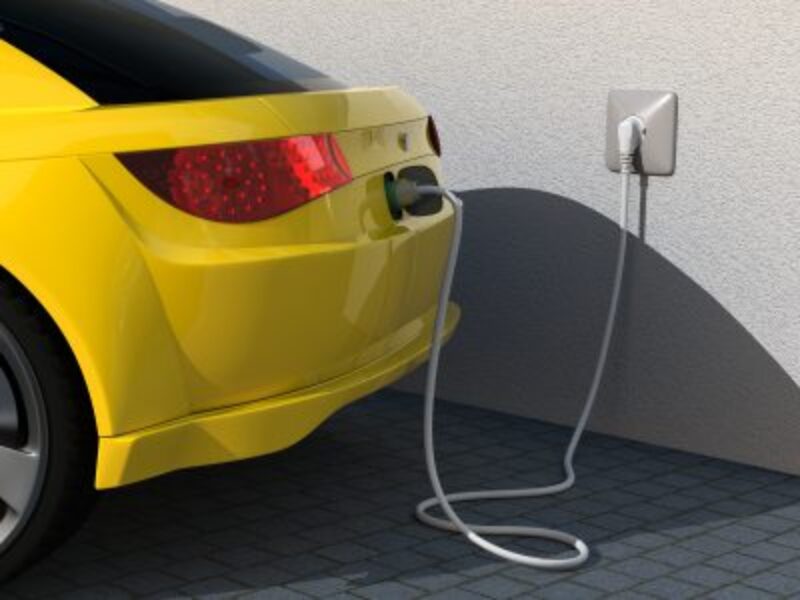
Determining battery range for electro-mobility
However, more than 62 per cent would be prepared to buy an electric car. As far as the success of electro-mobility is concerned, battery range therefore plays a crucial role. As the range of electric cars are considerably lower than combustion engines, manufacturers need to be able to test against and work with a set of measurements that are as close as possible to real world use. In reality, an electric vehicle driving up to 1,000 kilometres on one ‘tankful’ is out of the question and will remain so for the foreseeable future.
Range transparency
The electric car market therefore creates an interesting dichotomy for both consumers and manufacturers – if people want to drive an environmentally friendly electric car, then they must accept a much lower mileage range. To achieve greater acceptance for this inevitable drawback, drivers need to be better informed by manufacturers about how far their electric car will take them.
Drivers of electric cars must plan exactly the distances between charging stations. This of course means that range data must be precise and with only 100 to 150 kilometres per charge, manufacturers can no longer rely on measures equivalent to those used for combustion engines. With very little room for error when planning a route in an electric vehicle, manufacturers must rethink how they measure range and what parameters they use to determine it.
The TÜV SÜD E-Car Cycle (TSECC) was therefore developed as a new method for determining the range of electric vehicles, including parameters such as outside temperature and the use of power consumers within the car. One of the main concerns when developing this standard was to measure the range under conditions that were as realistic as possible. This means that manufacturers must use test parameters that use a driving style and selected route that are as close as possible to the real-world use of the vehicle.
Ensuring that you arrive at your destination
Because battery technology currently limits the range of electric cars so significantly, it does mean that their ultimate range depends to a huge extent on the outside temperature and the use of electrical equipment in the vehicle. When a driver uses the heating or air-conditioning, they still want to get to their destination. An agreed, international standard that includes these parameters will result in the publication of exact and honest specifications about the range of an electric car and thus increase drivers’ trust in these vehicles.
The winter is an especially testing time for batteries. A comparative test, for example, showed that the ranges under standard conditions (23 degrees Celsius) and wintry conditions (minus seven degrees Celsius) diverged by more than 50 per cent. This is because the internal resistance is greater due to an increase in the viscosity of the electrolyte at minus temperatures, and electro-chemical processes are slower. There is also an increased energy requirement because heating, air-conditioning and other electric power consumers are being used. This means that to be able to make realistic statements about the range of battery-powered vehicles, manufacturers need to calculate these factors much more precisely.
Measurements under realistic conditions
The extent to which temperature and electrical equipment affect consumption was demonstrated by the German motoring magazine ‘Auto Motor und Sport’. During its tests, the range of electric cars, based on the legally binding New European Driving Cycle NEDC, clearly diverged from those based on TÜV SÜD’s TSECC standard. The results from the NEDC test showed that the range of one Japanese e-car was 133 kilometres. Using the TSECC, the range dropped to 113 kilometres. At a temperature of minus seven degrees Celsius, with power consumers such as the heating turned on, the range dropped to a mere 64 kilometres.
The results of this independent test quite clearly showed that the standard information provided by manufacturers on electric vehicles, using data that is comparable to that for petrol-driven ones, is not sufficient to measure their range. Figures from our survey also show that 90 per cent of all motorists polled drive less than 100 kilometres a day, with 62 per cent driving less than 50 kilometres. This shows that it is already possible to make extensive use of electric cars and that such vehicles should not be thought of as a ‘second car’. And, if battery recharging stations were available at drivers‘ place of work, even those driving more than 100km per day could benefit from the advantages of electric vehicles.
Even so, there are still considerable reservations about the range. After all, who wants to end up in a traffic jam in winter and switch off the heating because the battery is too low, or to come to a sudden stop just because the seat-heating was on?
To overcome this assumption by consumers that electric cars are unreliable and not a replacement for the combustion engine, manufacturers must deliver more transparency about range capacity. They must stop comparing apples and pears when it comes to using the same type of range data between electric and petrol engines. Honesty will reassure owners of electric vehicles, enable them to plan their journey better and in a reliable way, and thus boost the popularity of e-mobility and support Europe’s ambitious environmental objectives.
Bio
Volker Blandow is Global Head of E-Mobility at TÜV SÜD AG – www.tuv-sud.co.uk
 If you enjoyed this article, you will like the following ones: don't miss them by subscribing to :
eeNews on Google News
If you enjoyed this article, you will like the following ones: don't miss them by subscribing to :
eeNews on Google News





